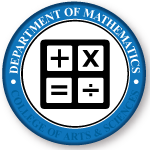Document Type
Article
Publication Date
2017
Publication Title
International Journal of Numerical Analysis and Modeling
Volume
14
Issue
3
First Page
355
Last Page
380
Abstract
In this paper, we provide the optimal convergence rate of a posteriori error estimates for the local discontinuous Galerkin (LDG) method for the second-order wave equation in one space dimension. One of the key ingredients in our analysis is the recent optimal superconvergence result in [W. Cao, D. Li and Z. Zhang, Commun. Comput. Phys. 21 (1) (2017) 211-236]. We first prove that the LDG solution and its spatial derivative, respectively, converge in the L 2 -norm to (p + 1)-degree right and left Radau interpolating polynomials under mesh refinement. The order of convergence is proved to be p + 2, when piecewise polynomials of degree at most p are used. We use these results to show that the leading error terms on each element for the solution and its derivative are proportional to (p + 1)-degree right and left Radau polynomials. These new results enable us to construct residual-based a posteriori error estimates of the spatial errors. We further prove that, for smooth solutions, these a posteriori LDG error estimates converge, at a fixed time, to the true spatial errors in the L 2 -norm at O(h p+2) rate. Finally, we show that the global effectivity indices in the L 2 -norm converge to unity at O(h) rate. The current results improve upon our previously published work in which the order of convergence for the a posteriori error estimates and the global effectivity index are proved to be p+ 3/2 and 1/2, respectively. Our proofs are valid for arbitrary regular meshes using P p polynomials with p ≥ 1. Several numerical experiments are performed to validate the theoretical results.
Recommended Citation
Baccouch, Mahboub, "AN OPTIMAL A POSTERIORI ERROR ESTIMATES OF THE LOCAL DISCONTINUOUS GALERKIN METHOD FOR THE SECOND-ORDER WAVE EQUATION IN ONE SPACE DIMENSION" (2017). Mathematics Faculty Publications. 48.
https://digitalcommons.unomaha.edu/mathfacpub/48


Comments
This article was posted with kind permission from the journal and can be found: http://www.math.ualberta.ca/ijnam/contents.htm.